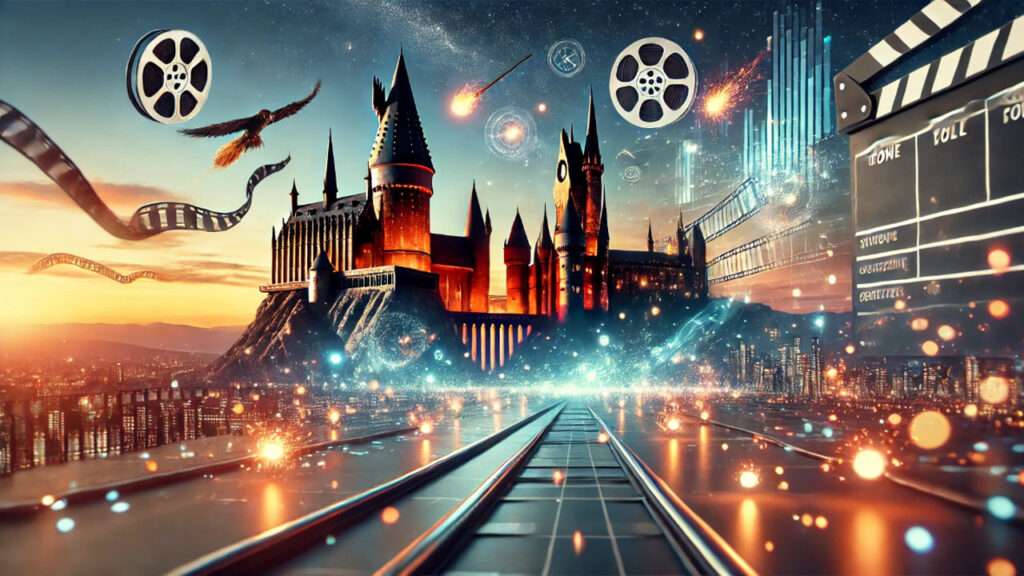
The Impact of Harry Potter on the Film Industry: How the Wizarding World Shaped Modern Cinema
When Harry Potter first graced the silver screen, few could predict the magic it would cast on the entire film industry. ✨ From groundbreaking special effects to redefined storytelling, Harry Potter revolutionized cinema in ways that are still felt today. But what exactly was the impact of Harry Potter on the film industry? How did a simple boy-wizard story lead to the rise of massive franchises and a shift in how films are made, marketed, and experienced?
In this article, we’ll explore how Harry Potter changed the filmmaking landscape, providing insights into everything from box office strategies to cinematic innovations. Whether you’re a fan of the franchise or curious about its industry-wide influence, keep reading to discover how this magical world continues to shape modern cinema. 🎬
Table of Contents
Toggle1: The Box Office and Financial Success – A New Era of Blockbusters
The Harry Potter franchise didn’t just capture hearts worldwide—it completely transformed the way films were made, marketed, and most importantly, monetized. 🌍✨ The box office success of these films set a new standard for blockbuster movies, creating a blueprint that many franchises would follow in their footsteps.
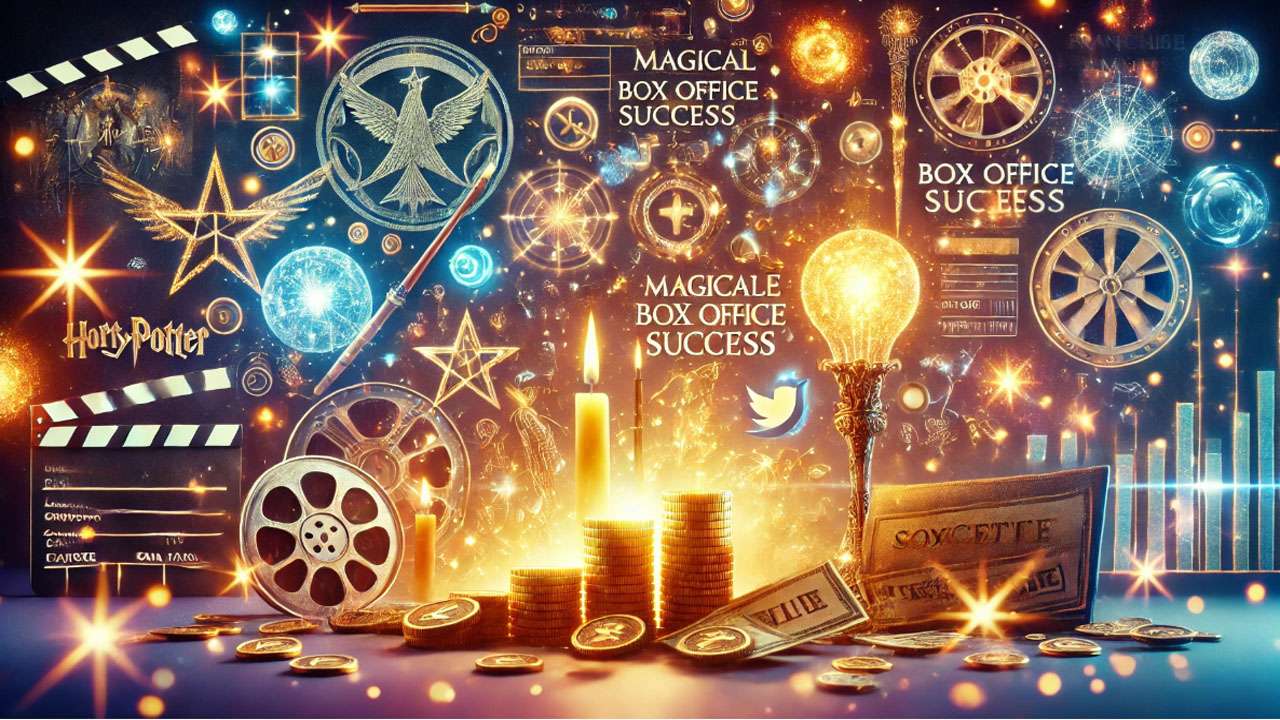
Record-Breaking Success at the Box Office
From the very first film, Harry Potter and the Sorcerer’s Stone (2001), the series dominated the global box office. With a total worldwide gross of over $1 billion, it quickly became clear that these films were more than just movies—they were an entertainment phenomenon. Each subsequent film in the series continued to break records, cementing Harry Potter as one of the most financially successful franchises in film history. 🎥💰
What’s the takeaway for the film industry?
The Harry Potter films proved that franchises could be a reliable path to immense box office success. Studios began to realize the power of creating multi-film series that could generate steady revenue over time. This inspired the rise of other big-budget, multi-film franchises like The Hunger Games, Twilight, and the Marvel Cinematic Universe.
The Rise of Franchise Film-Making
Before Harry Potter, stand-alone films were often the norm. But after the success of the Wizarding World, studios began to prioritize franchises—series with multiple installments, cross-media marketing, and expansive worlds that could span years. 🔄💡
The idea of “franchise filmmaking” became the go-to strategy for studios. With Harry Potter, we saw the rise of:
- Multiple Sequels & Prequels: Harry Potter’s 8 films were part of a longer, planned narrative arc. This concept would later inspire similar long-form storytelling in other big franchises.
- Spin-offs and Expanding Universes: After the success of the Harry Potter films, we saw the rise of the Fantastic Beasts series and other film universes, proving that a well-built world could support multiple stories.
The Power of Brand Building
One of the most impressive aspects of the Harry Potter phenomenon is how it turned a film series into a multi-platform brand. 🌟
- Merchandise: The Harry Potter films spurred a massive merchandise market. From wands and robes to video games and LEGO sets, the Wizarding World wasn’t confined to the screen.
- Theme Parks: The franchise expanded into theme parks like The Wizarding World of Harry Potter at Universal Studios, creating an immersive experience for fans while opening new revenue streams.
Lesson for the Industry:
Harry Potter showed how a film series could be more than just movies—it could evolve into an entire ecosystem that generates income through various channels. Studios now invest in creating and nurturing franchises that extend far beyond the theater.
2: Visual and Cinematic Innovations – Expanding the Limits of Movie-Making
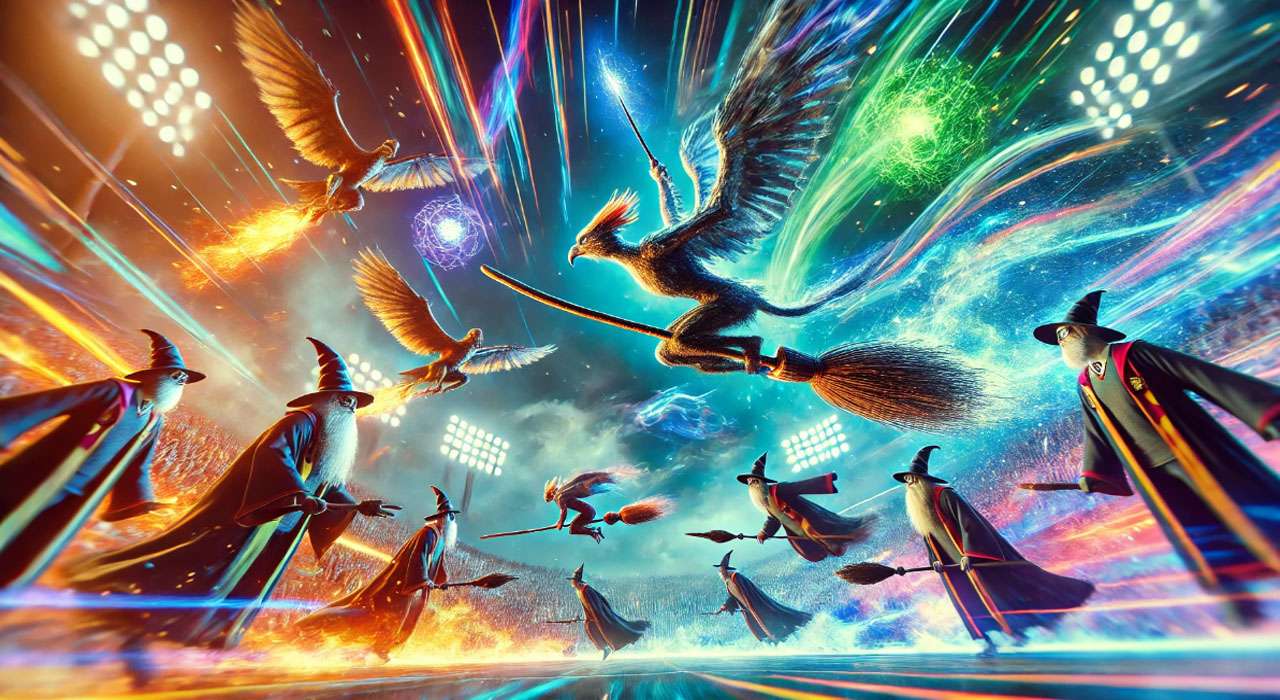
When we think of the Harry Potter films, one of the first things that comes to mind is the stunning visual effects and world-building that brought J.K. Rowling’s magical universe to life. ✨ From the moment Harry Potter and the Sorcerer’s Stone hit theaters, the series set a new standard for cinematic innovation. Here’s how the films expanded the boundaries of movie-making and influenced the industry as a whole.
Revolutionizing Special Effects and CGI
One of the key contributions of Harry Potter to modern cinema was its groundbreaking use of special effects and computer-generated imagery (CGI). While CGI was already in use in filmmaking, Harry Potter pushed the limits of what was possible. 💻🎬
- Quidditch and Magical Creatures: The flying broomstick scenes, Quidditch matches, and magical creatures like Buckbeak and the Hungarian Horntail dragon were brought to life with revolutionary CGI techniques. These sequences helped set a new benchmark for how fantasy films could use technology to create immersive worlds.
- Seamless Integration: The Harry Potter films excelled at integrating CGI with live-action in a way that felt natural. The audience could feel the magic without being distracted by the effects. This mastery of blending real and virtual worlds became a standard that many subsequent films would strive to match.
Innovative Use of Practical Effects
While CGI played a significant role, Harry Potter also relied on practical effects to create a sense of authenticity. For example, the magical props (wands, potions, etc.) were often crafted in detail to make them as realistic as possible. 🪄
- Set Design: The iconic Hogwarts castle and the various magical locations were built with meticulous attention to detail, blending real-world set design with the magic of special effects. The films used a mix of real sets and visual effects to create some of the most memorable film locations ever.
- Physical Effects: Scenes like the “Death Eater” battles involved carefully choreographed stunt work, smoke, explosions, and other practical effects that enhanced the sense of danger and excitement.
World-Building Through Cinematic Techniques
The visual aspects of Harry Potter also extended to how the world was constructed through cinematography. The films didn’t just create a fantasy world; they immersed audiences in it using clever techniques that made the magical realm feel tangible. 🌍
- Lighting and Color Palette: Each movie in the series used specific color schemes and lighting to set the mood. The earlier films often had warm, golden hues, reflecting the wonder and innocence of Harry’s early years at Hogwarts, while the later films employed darker tones to mirror the increasing danger and maturity of the characters.
- Cinematic Scope: The sweeping shots of Hogwarts, the Forbidden Forest, and Diagon Alley helped create a grand, epic feel that made the world feel vast and alive. The series masterfully used wide-angle shots and sweeping landscapes to give audiences the feeling that they were stepping into a living, breathing universe.
The Influence on Future Films
The visual and cinematic innovations introduced by Harry Potter didn’t just stay within the franchise—they influenced the entire film industry. 🎥🌟
- Fantasy and Sci-Fi Films: The success of Harry Potter set a new standard for fantasy films, prompting studios to invest heavily in similar visual effects for their own projects. Films like The Chronicles of Narnia, The Hobbit, and The Hunger Games followed suit, adopting similar techniques to create their own immersive worlds.
- Television and Streaming: TV shows like Game of Thrones and Stranger Things have also embraced similar cinematic techniques, particularly in their use of CGI and world-building. The influence of Harry Potter can be seen in how these shows create detailed, fantasy-driven universes that captivate audiences in the same way.
3: Storytelling Techniques – Deepening Emotional Impact in Franchise Films
One of the most powerful aspects of the Harry Potter films is their ability to weave complex, emotionally resonant stories within a fantasy framework. 📖✨ These films didn’t just rely on magical creatures and epic battles—they focused on deep, personal stories that connected with audiences on a human level. Here’s how the Harry Potter franchise revolutionized storytelling in franchise films and helped establish the emotional depth that defines modern blockbusters.
1. Complex Characters and Emotional Growth
The Harry Potter series is unique in its ability to develop its characters over time, allowing them to grow in meaningful ways. From a young, uncertain boy in The Sorcerer’s Stone to a determined, mature hero in The Deathly Hallows, Harry’s personal journey is one of the most compelling elements of the series. 👦🧙♂️
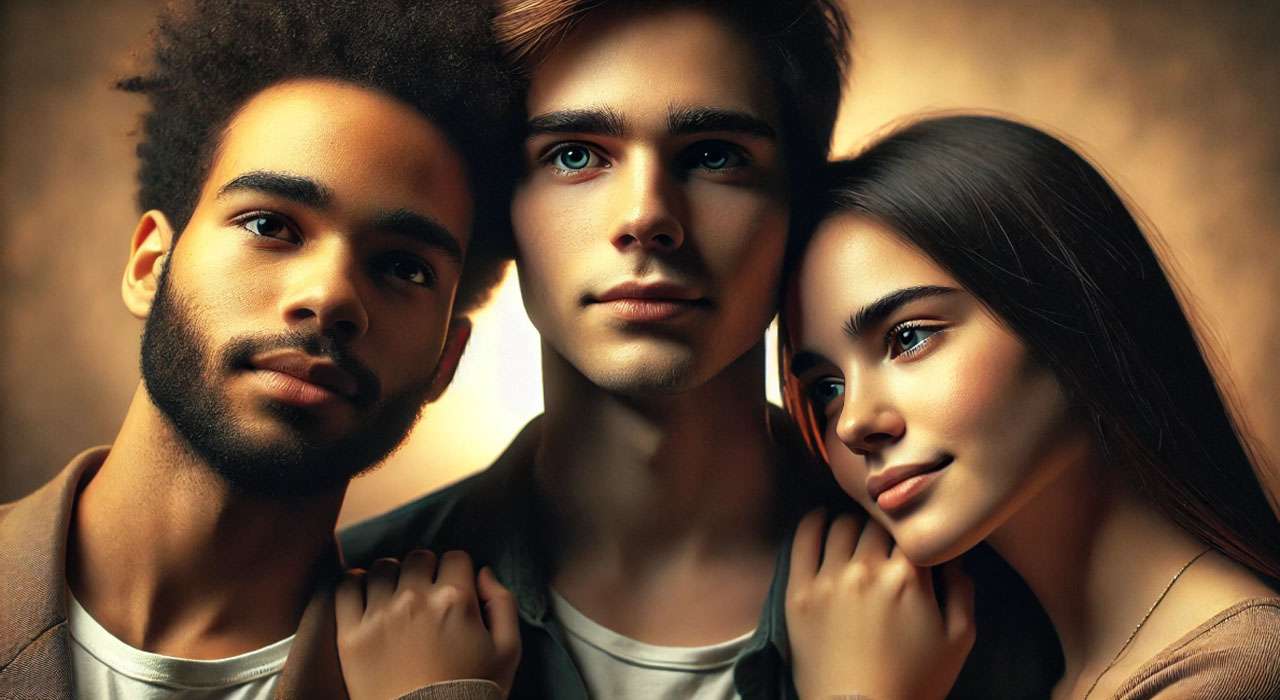
- Character Arcs That Matter: Each of the main characters—Harry, Hermione, and Ron—goes through significant emotional and personal growth. These evolving arcs made the characters relatable and real, something that is crucial for franchise storytelling.
- Real-World Themes: Themes like friendship, loyalty, sacrifice, and overcoming adversity resonated deeply with audiences. The Harry Potter films tackled complex emotions like loss, fear, and identity, making them feel more than just “magical adventures.”
The Takeaway: Modern blockbusters have learned from Harry Potter that emotional character development is key to keeping audiences invested over multiple films. It’s not just about the spectacle—it’s about the people.
2. Long-Term Storytelling Across Multiple Installments
One of the defining features of Harry Potter is how it told a single, continuous story across eight films. Each movie added layers to the overarching narrative, building toward a powerful climax that rewarded long-term viewers. 🎬⏳
- A Masterful Slow Burn: The series didn’t rush its plot. Instead, it allowed each movie to expand upon the last, exploring deeper layers of the Wizarding World, the complexities of its characters, and the dark forces threatening the realm.
- Building Tension and Payoff: By spreading the story over eight films, the franchise was able to create emotional tension that paid off in the final moments. This method encouraged viewers to stay invested for years, knowing that every detail mattered.
The Takeaway: The success of Harry Potter proves that building a rich, layered story over multiple films can create lasting emotional engagement. This technique has influenced other franchises like The Marvel Cinematic Universe, which follows a similar multi-installment approach.
3. Addressing Universal Themes Through Fantasy
At its core, Harry Potter isn’t just about wands and spells—it’s about universal themes that everyone can relate to. This deep emotional connection to themes of identity, belonging, and morality made the series more than just a fantasy epic. 🌍❤️
- Good vs. Evil: While the battle between Harry and Voldemort is central, the series also explores the gray areas of good and evil, highlighting the complexities of choices and the consequences of actions.
- Friendship and Loyalty: The trio’s unwavering loyalty to each other—especially during tough times—became a heartwarming symbol of friendship that audiences of all ages could identify with.
- Loss and Sacrifice: Characters like Harry, Sirius Black, and Dumbledore face loss in ways that shape their futures. The series doesn’t shy away from tough emotions, making the stakes feel real and relatable.
The Takeaway: By addressing these universal themes within a magical context, Harry Potter showed the power of using fantasy to explore real human emotions. This storytelling approach has since been adopted in other franchises to create stronger emotional connections with audiences.
4. Building a Strong Emotional Connection with Audiences
Ultimately, what made Harry Potter such an enduring success was its ability to foster deep emotional connections with its audience. 🎥❤️ Whether it was through Harry’s search for belonging, Hermione’s intelligence and determination, or Ron’s unwavering loyalty, viewers saw themselves in these characters.
- Nostalgia and Universality: The franchise grew with its audience, starting with children and following them into adulthood. As a result, many fans feel an intense emotional bond with the series, making it not just entertainment, but a part of their lives.
- Relatable Struggles: The characters’ personal struggles—such as Harry’s identity crisis or Hermione’s desire to prove herself—are struggles that many people can relate to in their own lives.
The Takeaway: Harry Potter proved that connecting emotionally with audiences is the key to the lasting success of any franchise. These films made fans feel like they were part of something bigger, creating a devoted following that persists to this day.
4: The Impact on Talent and Casting – Nurturing a New Generation of Actors
The Harry Potter franchise is known not only for its magical world and captivating stories but also for its incredible talent. The casting choices in the series helped nurture a new generation of actors and solidified the importance of both established stars and fresh talent in major film franchises. 🎭✨
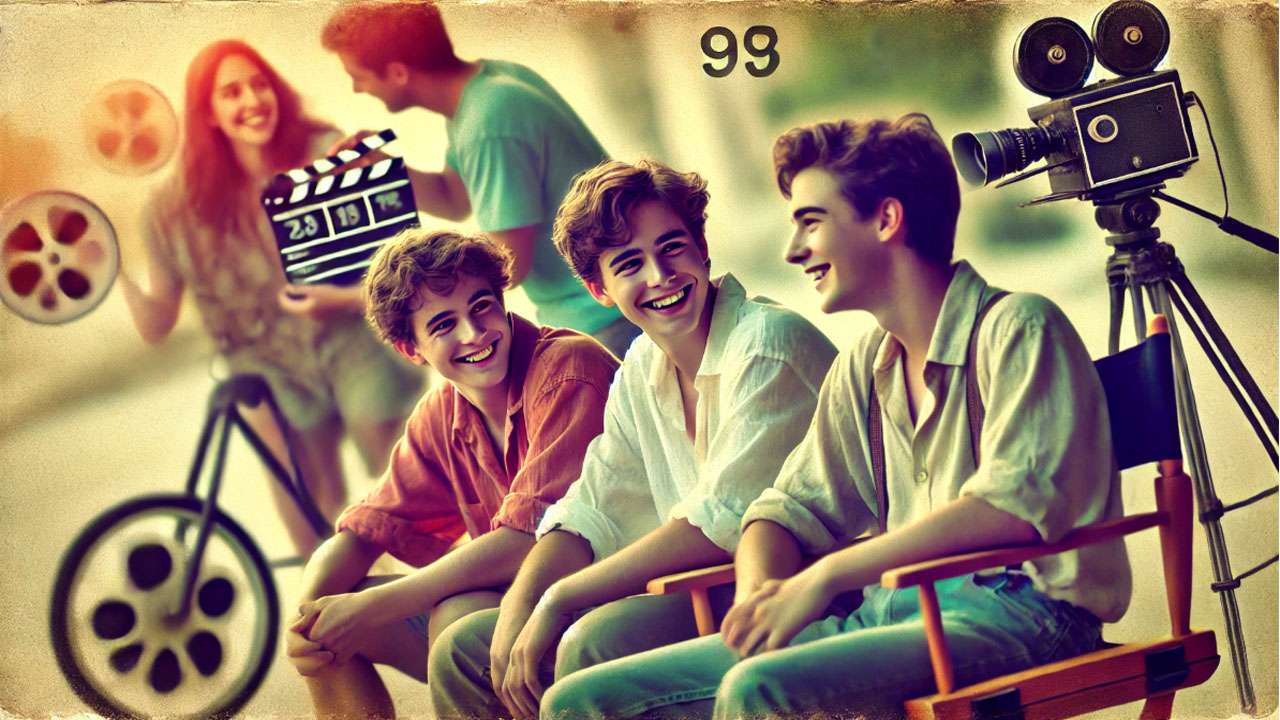
1. Discovering and Elevating New Talent
One of the most remarkable aspects of Harry Potter was its ability to launch the careers of young actors who had little to no major experience before landing their iconic roles. Daniel Radcliffe (Harry), Emma Watson (Hermione), and Rupert Grint (Ron) were relatively unknown when they were cast as the central trio. 🌟
- Long-Term Careers: These actors grew alongside their characters, and their performances matured throughout the series. Their journey from inexperienced young actors to seasoned professionals mirrored the growth of their characters, making their performances even more impactful.
- The Power of Youth: By casting young, relatively unknown actors, Harry Potter introduced the world to a generation of talent that would go on to star in a variety of roles, both in film and television. These actors proved that fresh faces could carry major franchises and become household names.
The Takeaway: The success of Harry Potter showed that casting relatively unknown but talented actors can pay off in the long run. It set a precedent for future films and franchises to take chances on new talent, creating opportunities for young actors to shine. 🎬
2. The Impact on Established Actors
While Harry Potter introduced new faces to the screen, it also brought many established actors into the fold, making them a part of its magic. Legends like Maggie Smith, Alan Rickman, and Michael Gambon brought gravitas and experience to their roles, elevating the storytelling. 👏
- Blending Talent: The mix of new and experienced actors helped balance the youthful energy of the central trio with the seasoned performances of veteran actors. This combination not only strengthened the performances but also added depth to the world of Harry Potter.
- The Role of the Mentor: For many of the younger cast members, working alongside these seasoned professionals offered valuable learning opportunities. The mentorship from iconic actors helped guide the next generation of talent, both on and off-screen.
The Takeaway: Harry Potter demonstrated the value of blending established talent with emerging stars. This balance between the old and the new helped create a dynamic, engaging cast that resonated with audiences.
3. Expanding Opportunities for Future Film Talent
The impact of Harry Potter on talent casting extends beyond the actors themselves. The franchise influenced casting trends in Hollywood and around the world. 📈
- More Focus on Diversity: As the industry learned from the success of the Harry Potter films, there has been a growing emphasis on casting diverse talent in major film franchises. The ability to appeal to a global audience has made diverse casting a priority for filmmakers seeking to reflect a more inclusive world.
- Expanding Career Paths: The success of Harry Potter has shown that actors from a franchise can branch out into a variety of roles. Actors like Emma Watson, who went on to become an advocate and star in films like Beauty and the Beast, and Daniel Radcliffe, who took on more complex and varied roles, demonstrated that franchise stars can successfully transition into diverse career paths.
The Takeaway: The success of Harry Potter helped redefine how talent is cast in major film franchises, proving that talented actors—both new and experienced—can elevate a film’s success and shape the future of casting.
4. Cultivating a Lasting Legacy of Talent
The Harry Potter films created a legacy that continues to influence how future generations of actors are viewed and cast. 🎥💫 The franchise taught filmmakers the importance of long-term relationships with actors, allowing them to grow together over the years.
- Talent Beyond the Screen: Many of the Harry Potter actors have gone on to shape the broader entertainment industry. Their involvement in stage plays, activism, and other creative projects shows that the series nurtured talent with lasting careers in and out of the film industry.
- Cultivating Passion for the Craft: For many young actors, starring in Harry Potter ignited a lifelong passion for acting. This influence continues to inspire a new generation of aspiring performers.
The Takeaway: The lasting legacy of Harry Potter on talent and casting is that it demonstrated the power of fostering long-term relationships with actors. By allowing young stars to grow into their roles, the franchise built a lasting talent pool that continues to shape the industry today.
5: The Cultural Impact – How Harry Potter Became a Global Phenomenon

Harry Potter wasn’t just a film series; it became a global cultural phenomenon that touched every corner of entertainment, media, and fandom. 🌍✨ From its widespread influence on pop culture to its impact on everyday life, the Wizarding World reshaped the way we think about stories and their cultural significance.
1. Creating a Global Fandom
At the heart of Harry Potter’s cultural impact is its massive, dedicated fanbase. The franchise brought together millions of fans worldwide, uniting people of all ages through a shared love of magic and adventure. 🧙♀️
- Fan Communities: The rise of fan clubs, conventions, and online communities helped Harry Potter create a sense of belonging. Fans could share their passion for the series, discuss theories, and even participate in fan fiction and fan art.
- Cultural Events: Major events like Potter releases, theme park openings, and the Wizarding World’s immersive experiences became global phenomena, drawing fans together to celebrate their shared love for the franchise.
The Takeaway: Harry Potter demonstrated how a film franchise could create lasting, global communities. It’s not just a series—it’s a cultural movement that brought fans together across continents.
2. Harry Potter in Pop Culture
The impact of Harry Potter goes far beyond the films themselves. References to the Wizarding World have become ubiquitous in modern pop culture, influencing everything from music to memes. 🎶🎭
- Iconic Quotes and Symbols: Phrases like “Muggle,” “Accio,” and “Expelliarmus” have entered common vernacular. The series’ symbols, such as the Deathly Hallows and Hogwarts crest, have become globally recognized.
- Cross-Media Influence: Harry Potter inspired countless TV shows, books, and films that borrowed from its fantasy elements. It shaped the way subsequent franchises like The Hunger Games and Twilight approached world-building, character development, and fan engagement.
The Takeaway: Harry Potter helped define modern pop culture, embedding its characters, quotes, and symbols into everyday language and media.
3. Impacting Literature and Education
The Harry Potter books weren’t just a launchpad for the films—they sparked a revolution in children’s literature. 📚✨ The success of the books made publishers and filmmakers alike realize the power of captivating, layered stories for young audiences.
- Encouraging Reading: The series helped a generation of children rediscover the joy of reading. Libraries, schools, and parents embraced the books, with kids eagerly devouring each new installment.
- Educational Influence: Many schools began using Harry Potter books to teach lessons about friendship, morality, and even the complexities of good vs. evil. The series showed how literature could connect with young readers and introduce them to deeper life lessons.
The Takeaway: Harry Potter not only changed how people consumed stories, but it also sparked an entire literary movement that got kids excited about reading again.
4. The Influence on Social and Political Movements
Beyond entertainment, Harry Potter had an impact on social and political discussions. Themes of unity, standing up against injustice, and fighting for equality resonated deeply with fans, especially as global issues grew more complex. 🌎✊
- Inspiring Activism: The characters’ fight against Voldemort’s oppression mirrored real-world struggles against discrimination, prejudice, and authoritarianism. The films often encouraged young people to take action and stand up for what they believe in.
- Themes of Tolerance and Diversity: Harry Potter introduced characters from diverse backgrounds and highlighted issues like racism, acceptance, and the power of diversity. These themes continue to be relevant in today’s world, encouraging social change.
The Takeaway: The series’ underlying messages about resistance, unity, and diversity helped shape how Harry Potter fans engaged with the world socially and politically.
5. Building Lasting Cultural Icons
The cultural impact of Harry Potter is evident in its lasting icons. Harry, Hermione, Ron, and other beloved characters have become symbols of bravery, intelligence, and loyalty. 🏆
- Universal Appeal: The characters are not confined to a specific age, culture, or time period. Their universal appeal has helped the series transcend its original book and film format, creating an ever-growing cultural legacy.
- Timeless Storytelling: The Wizarding World’s themes of growing up, facing adversity, and the importance of friendship and love remain timeless. These universal messages continue to resonate across generations.
The Takeaway: Harry Potter gave birth to cultural icons who continue to influence future generations. The timeless themes of the series ensure that its impact will be felt for years to come.
6: The Legacy of Harry Potter – Continuing Influence on the Film Industry
The Harry Potter franchise may have wrapped up its main film series over a decade ago, but its legacy is still profoundly shaping the film industry today. From how movies are made to the cultural impact they have, the Wizarding World continues to set trends and influence major filmmaking decisions. 🌟🎥
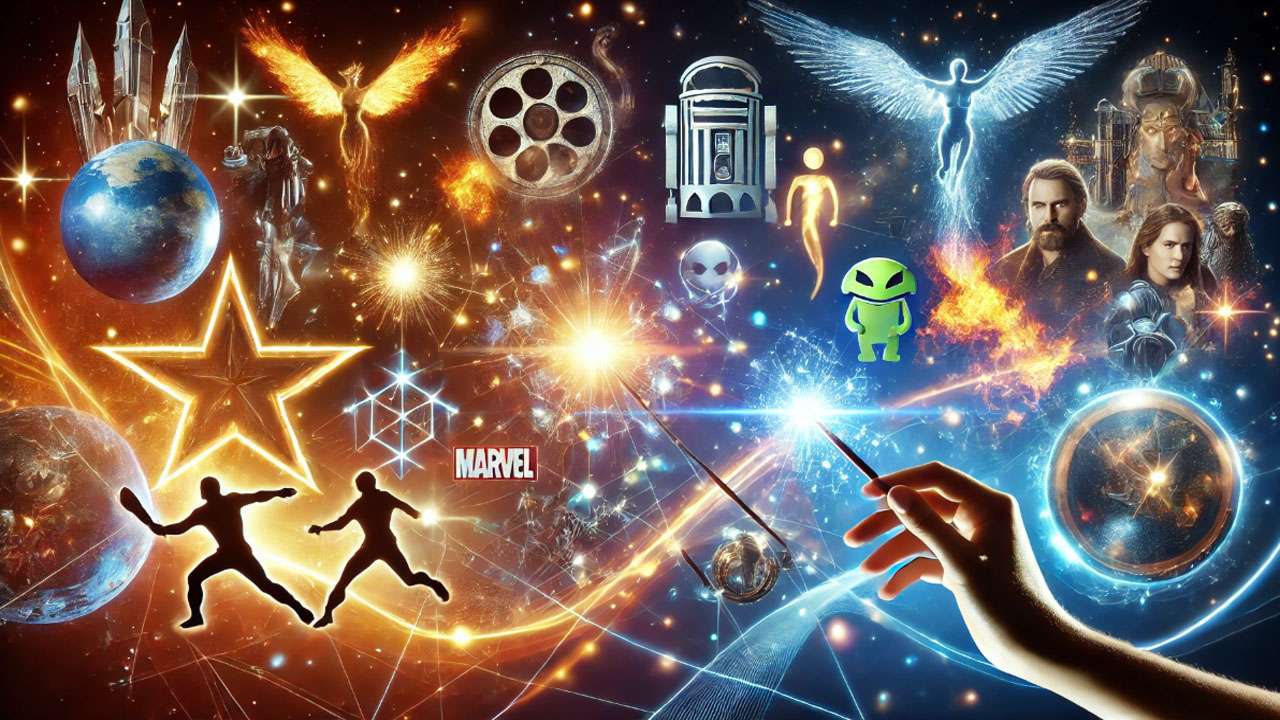
1. The Franchise Model: Expanding Universes and Spinoffs
One of the most lasting impacts of Harry Potter on the film industry is the rise of franchise-driven filmmaking. Harry Potter proved that a well-developed world could sustain multiple films and spin-offs, creating expansive universes that continue to generate success.
- Spinoffs and Expansions: The Fantastic Beasts films, which explore the Wizarding World’s past, are a direct result of Harry Potter’s ability to expand beyond its original storyline. This has led other major franchises, like Star Wars and The Lord of the Rings, to explore spinoffs and prequels.
- Shared Cinematic Universes: The success of Harry Potter’s universe-building laid the groundwork for the Marvel Cinematic Universe (MCU), which capitalizes on creating interconnected, expansive worlds across multiple films.
The Takeaway: Harry Potter set the stage for the modern trend of building shared cinematic universes, where multiple films, shows, and spinoffs work together to create a cohesive and expansive world. 🌍
2. Cross-Media and Immersive Experiences
Beyond movies, Harry Potter has redefined how films can extend their reach through other media and immersive experiences.
- Theme Parks and Immersive Experiences: The Wizarding World of Harry Potter at Universal Studios has been a game-changer, showing how film franchises can be expanded into real-world experiences. Theme parks now use immersive storytelling to bring movie worlds to life, drawing in millions of visitors.
- Video Games and Merchandise: The Harry Potter series also set the standard for how films can lead to video game franchises and successful merchandise lines, making the world of a film live on in ways that are interactive and engaging for fans.
The Takeaway: The Harry Potter franchise has pioneered how movies can extend beyond the screen, creating experiences that fans can engage with in real life. This model has influenced the way studios approach cross-media expansions. 🎮🏰
3. Storytelling Across Generations
One of the most enduring aspects of Harry Potter’s legacy is its ability to transcend generations. The series didn’t just appeal to children—it grew with its audience. As fans aged, the themes of the series evolved, allowing it to resonate with multiple generations.
- Mature Storytelling: The later films, especially from The Goblet of Fire onwards, tackled more mature themes like death, loss, and moral ambiguity. This shift allowed the series to retain its relevance as its core audience grew older.
- Multi-Generational Appeal: New generations of fans are still discovering the series, while older fans continue to revisit it. This timeless storytelling has influenced other franchises, encouraging filmmakers to create content that can be enjoyed by both kids and adults.
The Takeaway: Harry Potter showed that deep, evolving storytelling can connect with audiences across different age groups, setting a new standard for long-lasting franchise appeal. 📚👨👩👧👦
4. Influence on Filmmaking Technology and Visual Effects
The visual effects and filmmaking technology introduced in Harry Potter are still a reference point in the film industry. From groundbreaking CGI to the seamless integration of practical effects, the series elevated how fantasy films are created.
- Innovative Use of CGI: Harry Potter pushed the boundaries of CGI, making magic on screen look believable and immersive. The Quidditch matches, magical creatures, and enchanted landscapes set new standards for what was possible in visual effects.
- Practical Effects: Along with CGI, the series also relied on practical effects—elaborate sets, animatronics, and practical stunts—blending them with digital effects to create more lifelike magic.
The Takeaway: The technological advancements in Harry Potter have had a lasting effect on how filmmakers approach visual storytelling. The mix of practical and digital effects has become a standard in modern filmmaking. 🎨🎬
5. A New Standard for Fan Engagement
Harry Potter revolutionized how film franchises engage with their fans. The series was one of the first to fully embrace digital fandom, creating a two-way interaction between the creators and the audience.
- Social Media and Digital Communities: Fans were able to interact with each other online, creating fan art, fan fiction, and participating in online discussions. The franchise embraced this by releasing exclusive content and allowing fans to contribute to the world of Harry Potter.
- Fandoms as Marketing Tools: Harry Potter showed that fandoms are more than just passive consumers—they are active participants who drive a franchise’s longevity. Engaging fans through interactive experiences, behind-the-scenes content, and fan events became a key strategy for continued success.
The Takeaway: Harry Potter set a precedent for engaging with fans online and making them part of the franchise’s success. It’s now common practice for franchises to leverage digital communities and social media to expand their reach. 📱🎉
The Enduring Magic of Harry Potter in Cinema
The Harry Potter franchise is more than just a series of films—it is a transformative force that reshaped the film industry in countless ways. From the rise of expansive franchises and cross-media experiences to innovative storytelling and cultural influence, Harry Potter continues to leave an indelible mark on the cinematic world. 🎬✨
What makes the legacy of Harry Potter so powerful is its ability to connect deeply with audiences of all ages, creating a timeless bond between the Wizarding World and fans worldwide. It introduced new approaches to casting, visual effects, and storytelling, setting new standards for how movies are made, marketed, and consumed.
As we look to the future, it’s clear that the Harry Potter films will continue to influence filmmakers, storytellers, and franchises for generations to come. The magic is far from over. 🌟
Frequently Asked Questions (FAQs)
1. How did Harry Potter change the film industry?
Harry Potter revolutionized the film industry by proving that a successful franchise could generate long-term, global interest. It introduced the concept of expansive, interconnected cinematic universes and set a new standard for visual effects, storytelling, and fan engagement, shaping how films are produced and marketed today.
2. What impact did Harry Potter have on modern movie franchises?
Harry Potter paved the way for other successful film franchises by demonstrating that well-developed characters, intricate world-building, and engaging stories could sustain multiple films. It influenced the Marvel Cinematic Universe and other franchises to focus on creating expansive narratives across various media.
3. How did Harry Potter influence visual effects in movies?
Harry Potter pushed the boundaries of CGI and practical effects, making magic feel real on screen. The series’ use of cutting-edge visual effects for Quidditch matches, magical creatures, and spellcasting set new benchmarks in the fantasy genre, influencing how future films approached special effects.
4. What role did casting play in Harry Potter’s success?
The casting in Harry Potter was a key factor in its success. The films introduced a new generation of young actors, such as Daniel Radcliffe, Emma Watson, and Rupert Grint, who grew with their characters. Additionally, the combination of established talent, like Alan Rickman and Maggie Smith, helped elevate the performances and add depth to the story.
5. How did Harry Potter impact fan engagement and pop culture?
Harry Potter created a global fandom and helped redefine how movies engage with audiences. The franchise embraced fan-created content, fan clubs, and online communities, allowing fans to share theories, create artwork, and stay connected. Its cultural references and iconic quotes continue to resonate in pop culture today.
6. What lasting effects did Harry Potter have on the entertainment industry?
The long-lasting effects of Harry Potter include the widespread use of the franchise model, where studios focus on creating multi-film sagas, spinoffs, and immersive experiences. Additionally, its impact on merchandise, theme parks, and fan-driven content has shaped how studios approach global brand-building.
7. How did Harry Potter influence storytelling in cinema?
Harry Potter brought complex, multi-layered storytelling to blockbuster cinema. The series showcased how long-term character arcs and evolving themes could keep audiences emotionally invested over multiple films, influencing how other major franchises approach character development and narrative structure.
8. What role did Harry Potter play in the rise of immersive movie experiences?
Harry Potter was a pioneer in expanding film experiences beyond the screen. The Wizarding World theme parks, video games, and interactive exhibitions have set a new precedent for how movies can create immersive, cross-media experiences, offering fans a chance to engage with the world in real life.
